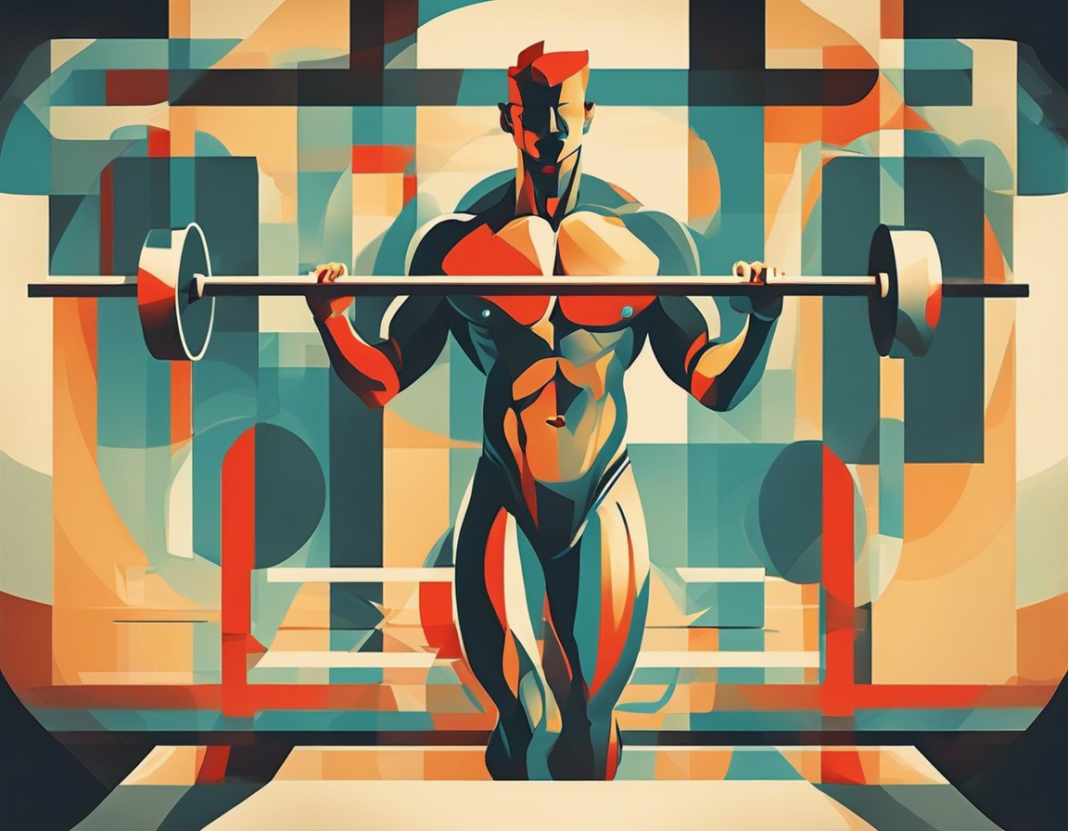The Bottom Line:
- Improper bench press technique leads to shoulder strain and lack of chest activation
- Correct elbow angle alignment helps activate chest muscles effectively
- Importance of finding the right grip width for optimal muscle engagement
- Proper body setup and stability enhances strength and reduces injury risk
- Alternatives to bench press for individuals who have difficulty with the exercise
Elbow Angle: Find the Right Position for Optimal Chest Activation
When bench pressing, finding the right elbow angle is crucial for optimal chest activation. If your elbows are too wide, it can be challenging to bring the bar all the way down to your chest, putting strain on your shoulders. On the other hand, tucking your elbows in creates a more direct path for activating your chest muscles. However, the perfect elbow angle varies for individuals, so focus on your bar path instead of exact angles.
Smith Machine Technique
When using a Smith machine, the angled design requires you to face the direction of the bar path for the best results. Position yourself so the bar touches your lower chest at the bottom of the lift. If using a straight up-and-down Smith machine, adjust your position so the bar touches your mid-chest. Proper grip width is essential for optimal performance, so adjust it based on your body alignment and comfort.
Proper Form Execution
To execute correct form, maintain a proud chest posture and engage your back muscles to bring the bar down as if rowing. Focus on squeezing your chest muscles together on the way up, rather than just pushing the weight. Lightening the load may be necessary to ensure proper muscle engagement.
Set up for success by establishing a stable base with proper foot positioning, activating your core and lats, and gripping the bar tightly. Creating full-body tension before pressing mimics the stability needed for a strong and safe lift, akin to an unopened can versus an empty one.
Remember, utilizing free weights like the bench press versus machines may not lead to significant growth differences. If the bench press continues to challenge you despite technique improvements, consider alternative chest exercises like machines or dumbbells. Always prioritize using correct form to prevent injuries and maximize results in your workouts.
Grip Width: Customize Your Grip for Maximum Effectiveness
Customize Your Grip Width
When it comes to maximizing the effectiveness of your bench press, one crucial factor to consider is your grip width. Many lifters make the mistake of using a standard grip without realizing that the right grip width can vary depending on individual body mechanics.
Finding Your Ideal Grip
A recent study analyzed 27 trained individuals performing the bench press and found that even with the same grip width, muscle activation varied significantly among participants. This highlights the importance of finding the right grip width that works best for your body.
To determine your ideal grip width, start by resting the bar on your lower chest at the target touch point. If your forearms angle inward, your grip is likely too narrow, leading to more triceps involvement. Conversely, if your forearms angle outward, your grip may be too wide, compromising chest activation.
For optimal engagement of the chest muscles with minimal stress on the joints, aim for a grip width that allows your wrists, forearms, and elbows to be stacked directly under the bar at the bottom position. Adjust your grip width accordingly to maintain this alignment.
Correcting Grip and Elbow Alignment
By focusing on a narrower grip and proper elbow alignment, you can enhance chest activation during the bench press. Avoid flaring your elbows out too much on the way down, as this can shift the emphasis away from the chest muscles. Instead, prioritize keeping your elbows in alignment with your wrists for efficient biomechanics.
Remember, the goal is to create a stable base with optimal grip width and elbow positioning to ensure that your chest muscles are effectively targeted during the bench press.
Correct Form: Focus on Proper Body Mechanics for Better Muscle Engagement
Proper Body Mechanics for Better Muscle Engagement
Correct form is essential in maximizing muscle engagement and avoiding injuries during the bench press. Focus on proper body mechanics to ensure that you are effectively targeting your chest muscles and optimizing your workout results.
Optimal Elbow Angle for Chest Activation
When bench pressing, finding the right elbow angle is crucial for activating your chest muscles efficiently. A wide elbow angle can strain your shoulders and limit the range of motion. In contrast, tucking your elbows in creates a more direct path for engaging your chest. Experiment with different angles to find what works best for you.
Remember to focus on your bar path rather than exact angles. Aim to touch your lower chest or nipple area with the bar on the way down to ensure proper muscle activation. By maintaining the correct elbow angle, you can enhance your chest engagement and minimize stress on other muscle groups.
Smith Machine Alignment and Grip Width
If using a Smith machine, adjust your position based on the machine’s design for optimal results. Ensure that the bar touches the appropriate chest level at the bottom of the lift. Additionally, customize your grip width to align your wrists, forearms, and elbows directly under the bar for maximum effectiveness.
Creating a stable base with proper foot positioning, engaging your core and lats, and gripping the bar firmly are crucial for executing correct form. By establishing full-body tension before each lift, you mimic the stability needed for a successful and safe bench press. Prioritize using correct form to prevent injuries and achieve the best possible outcomes in your workouts.
Setup Tips: Improve Stability and Power with the Right Setup
Enhancing Bench Press Stability and Power
Improving the stability and power of your bench press setup can significantly impact your lifting performance and muscle engagement. Here are some tips to help you optimize your bench press setup for better results.
Perfecting Your Elbow Angle
When setting up for the bench press, pay close attention to your elbow angle. Avoid having your elbows too wide, as this can limit the range of motion and put excessive strain on your shoulders. Instead, aim for a tucked elbow position, creating a more direct path for activating your chest muscles. Experiment with different angles to find what works best for you, focusing on the bar path rather than exact angles.
Whether your ideal elbow angle is around 60° or slightly flared out, ensure that the bar touches your lower chest or nipple area on the way down. This alignment promotes proper muscle activation and minimizes stress on other muscle groups.
Optimizing Grip Width for Effectiveness
Customizing your grip width is crucial for maximizing the effectiveness of your bench press. Rather than using a standard grip, find the grip width that works best for your body mechanics. Rest the bar on your lower chest and adjust your grip width until your wrists, forearms, and elbows are stacked directly under the bar at the bottom position.
By maintaining the correct grip width, you can enhance chest muscle engagement with minimal stress on your joints. This alignment not only improves your lifting performance but also reduces the risk of shoulder injuries during the bench press.
Remember, focusing on proper grip and elbow alignment helps target your chest muscles efficiently and safely during the bench press, leading to better results and enhanced muscle activation.
Create a stable base by setting up with proper foot positioning, engaging your core and lats, and gripping the bar firmly. By establishing full-body tension before each lift, you can mimic the stability needed for a strong and safe bench press. Prioritize correct form to prevent injuries and maximize the effectiveness of your workouts.
Consider Alternatives: Explore Different Exercises if Bench Press Doesn’t Suit You
Explore Different Exercises for Chest Activation
If you find that the bench press isn’t the best fit for you, don’t worry. There are plenty of alternative exercises that can effectively target your chest muscles. Dumbbell presses, machine chest presses, push-ups, and cable flies are just a few examples of exercises that can provide similar benefits to the bench press. Experiment with different exercises to find what works best for your body and helps you achieve optimal chest activation.
Try Machine Chest Presses
Machine chest presses can be a great alternative to the traditional bench press, especially if you have any shoulder issues or struggle with maintaining proper form during the bench press. Machines can provide more stability and control, which can be beneficial for individuals looking to isolate their chest muscles without worrying about balancing a free weight barbell or dumbbells. Adjust the seat and hand position on the machine to ensure you are targeting your chest effectively.
Incorporate Dumbbell Flyes
Dumbbell flyes are another excellent exercise for targeting the chest muscles. This exercise allows for a greater range of motion compared to the bench press, which can help with both muscle activation and flexibility. Focus on controlling the movement and squeezing your chest muscles at the top of the exercise. Start with lighter weights and gradually increase as you perfect your form to avoid any strain on your shoulders or joints.
Remember, it’s essential to listen to your body and choose exercises that work best for you. Don’t feel pressured to stick to one specific exercise if it doesn’t feel right for your body. By exploring different exercises and finding what suits you best, you can still achieve a strong and well-developed chest without compromising your form or risking injury.





